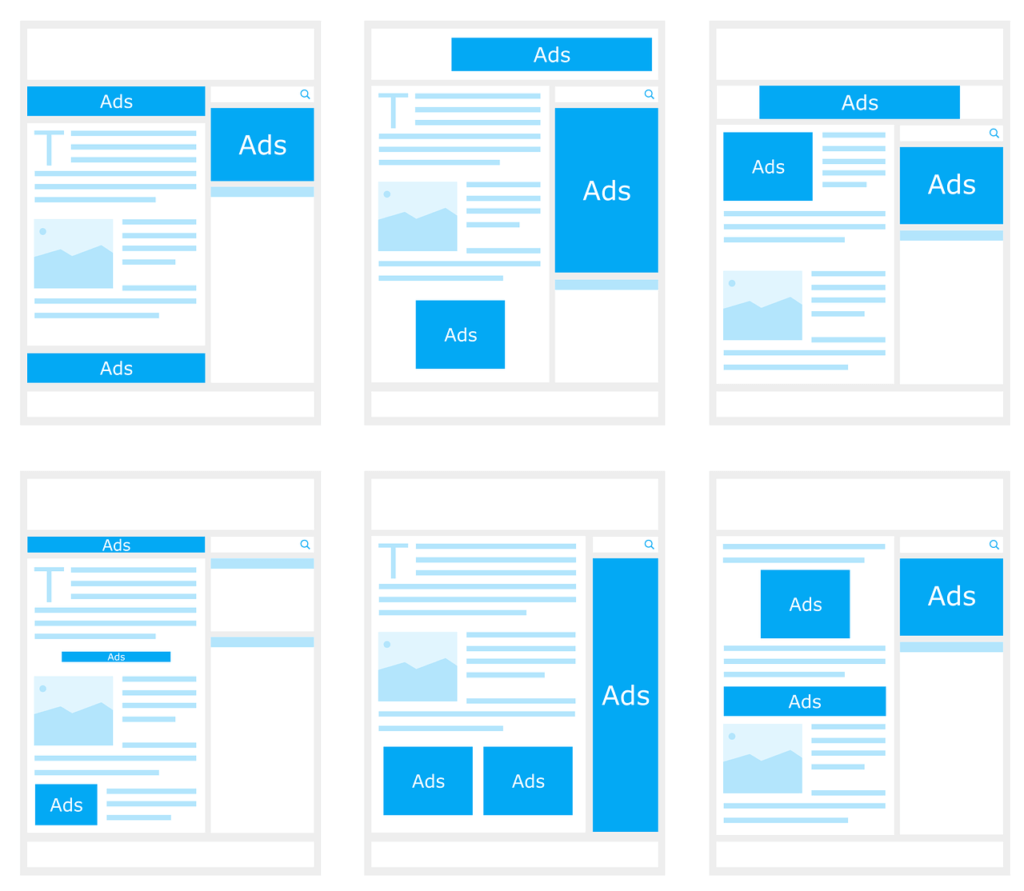In today’s digital landscape, content creators face a delicate balancing act between ensuring the quality of their content and achieving their monetization goals. It’s a complex challenge that requires creators to navigate the ever-evolving world of online content, adapt to changing consumer demands, and find a way to make a profit without compromising the integrity of their work. This article explores the unique hurdles and obstacles that content creators encounter in their pursuit of both delivering high-quality content and generating revenue. From striking the right balance between advertisements and engaging content to finding sustainable revenue streams, the challenges of achieving this equilibrium are manifold. Join us as we delve into the intricacies of this ongoing struggle and explore potential solutions to effectively reconcile content quality and monetization goals.

Determining the Optimal Balance
Understanding the Need for Balance
When it comes to running a successful online platform, striking the right balance between content quality and monetization goals is crucial. Content is king in the digital world, and it is the quality, relevance, and value of your content that attracts and retains your audience. However, monetization plays a pivotal role in the sustainability and growth of your platform. Balancing these two aspects requires a deep understanding of their importance and the challenges that come with finding the optimal equilibrium.
Recognizing the Importance of Content Quality
High-quality content is the foundation of any successful online platform. It is what draws in your audience, keeps them engaged, and establishes your brand as an authority in your niche. Quality content provides value, educates, entertains, and solves problems for your readers. However, maintaining content quality can be a challenge as you strive to meet the ever-evolving expectations of your audience while still generating revenue.
Realizing the Significance of Monetization Goals
Monetization goals are essential for the financial sustainability of your online platform. It involves finding ways to generate income through various channels such as advertisements, sponsored content, subscriptions, or partnerships. Monetization allows you to invest in improving your content, hiring talent, and continuously enhancing the user experience. However, pursuing monetization goals without considering the impact on content quality can backfire, resulting in a loss of audience trust and engagement.
Identifying the Challenges Faced in Balancing Both
Balancing content quality and monetization goals can be challenging due to several reasons. One challenge is finding the right monetization channels that align with your audience’s preferences and your content niche. Additionally, avoiding excessive advertisements that overwhelm your readers and impact user experience poses another obstacle. Striking a balance with sponsored content is also crucial so as not to compromise your editorial integrity. Finally, maintaining content relevance and integrity while meeting revenue targets requires careful planning and execution.
Maintaining Content Relevance
Creating High-Quality Relevant Content
Creating high-quality, relevant content is crucial to keeping your audience engaged and attracting new visitors. It involves understanding your target audience’s needs, interests, and pain points and crafting content that addresses those. By consistently offering valuable and insightful content, you can establish yourself as a trusted source in your niche and keep your audience coming back for more. Remember to optimize your content for search engines, use reliable sources, incorporate visuals, and ensure proper grammar and style.
Avoiding Excessive Monetization
While monetization is necessary, it is essential to strike a balance and avoid excessive monetization tactics. Bombarding your audience with too many advertisements can be off-putting and disrupt the user experience. Instead, focus on strategically placing ads that are relevant to your content and audience. Implementing a thoughtful ad placement strategy prevents overwhelming your readers and ensures a positive user experience. Remember, quality content should be the priority, and monetization should complement it.
Balancing Sponsored Content
Sponsored content can be a valuable source of revenue, but it is crucial to maintain a delicate balance. By partnering with brands that align with your values and resonate with your audience, you can ensure that sponsored content seamlessly integrates with your platform. However, it is essential to clearly disclose sponsored content to maintain transparency and preserve your audience’s trust. Strive to produce high-quality sponsored content that adds value to your readers and maintains your content integrity.
Ensuring Content Integrity
Content integrity is essential to maintain the trust and loyalty of your audience. As you explore monetization opportunities, it’s crucial to ensure that your content remains authentic, unbiased, and well-researched. Avoid compromising your content integrity by accepting advertisements or partnerships that do not align with your values or compromise the quality of your content. Building a reputation for trustworthy and reliable content is key to establishing credibility and longevity in the online space.

Implementing Effective Monetization Strategies
Choosing the Appropriate Monetization Channels
Choosing the right monetization channels is crucial for achieving your revenue goals while maintaining a positive user experience. Explore various options such as display advertisements, affiliate marketing, sponsored content, subscriptions, or even merchandise. Consider your audience’s preferences and behavior, as well as your content type, to make informed decisions about the monetization channels that align with your platform’s goals. Experimentation and monitoring performance metrics will help you identify which strategies are most effective.
Avoiding Excessive Advertisements
Excessive advertisements can hinder user experience, drive away your audience, and compromise your content’s quality. While advertisements are a significant revenue source, it’s important to strike a balance. Implement ad placement strategies that are non-intrusive and do not overwhelm your readers. Consider using ad blockers on your platform to allow users the option to control the level of advertising they encounter. Focus on quality rather than quantity when it comes to ads, and aim for relevance to your audience and content.
Striking a Balance with Native Advertising
Native advertising is a form of advertising that blends seamlessly with your platform’s content, providing a more natural and immersive experience for your audience. However, it is crucial to maintain a careful balance. Clearly distinguish native advertising from your organic content and ensure that it provides value to your readers. Native advertising should align with your content, be relevant to your audience, and not compromise your editorial integrity.
Using Affiliate Marketing Wisely
Affiliate marketing is a popular monetization strategy that involves promoting products or services and earning a commission for each sale referred. To use affiliate marketing wisely, choose products or services that are a natural fit for your niche and resonate with your audience. Promote only those products you genuinely believe in, as recommending low-quality or irrelevant products can damage your credibility. Be transparent with your audience about your affiliate relationships and disclose any potential biases.
Navigating User Experience and Engagement
Optimizing Page Loading Speed
A slow-loading website can significantly impact user experience and lead to high bounce rates. Optimize your platform’s page loading speed by minimizing unnecessary plugins, compressing images, leveraging caching techniques, and choosing a reliable hosting provider. A fast-loading website ensures that your content is readily accessible, keeping your audience engaged and satisfied.
Minimizing Intrusive Ads
Intrusive ads, such as pop-ups or auto-playing videos, can disrupt user experience and drive readers away. To maintain a friendly user experience, limit or completely avoid intrusive ad formats. If you do choose to include such ads, ensure they are non-disruptive and easily closed. Strive to strike a balance between monetization and user experience, keeping your audience engaged without compromising their browsing experience.
Prioritizing Content Accessibility
Content accessibility is critical to ensure that users of all abilities can engage with your platform. Make your content accessible by implementing features such as alt text for images, closed captions for videos, and proper semantic structure for assistive technologies. Prioritizing accessibility not only broadens your audience but also demonstrates inclusivity and improves overall user experience.
Enhancing User Interface and Design
Effective user interface (UI) and design can significantly enhance user experience and engagement. Invest time and resources in creating an intuitive and visually appealing interface that is easy to navigate. A well-designed platform improves readability, encourages exploration, and increases time spent on your site. Remember to optimize your platform for mobile devices, as an increasing number of users access content through smartphones and tablets.

Building and Maintaining Trust
Being Transparent with Sponsored Content
Transparency is paramount when it comes to sponsored content. Clearly disclose to your audience when content is sponsored or when you have a financial relationship with a brand or advertiser. Transparency builds trust and ensures that your audience understands the nature of the content they are consuming. By being upfront and honest, you maintain your integrity and credibility, fostering a strong and loyal relationship with your readers.
Avoiding Misleading Advertising
Misleading advertising not only damages your credibility but also violates ethical practices. Avoid any form of deceptive or false advertising by thoroughly vetting the products or services you promote. Honesty and authenticity should be guiding principles in all your advertising efforts. Invest in establishing long-term relationships with reputable advertisers who provide quality products or services that align with your platform’s values.
Protecting User Privacy
User privacy is of utmost importance in the digital age. Ensure that you handle user data responsibly and comply with relevant privacy regulations. Be transparent about the data you collect, how it is used, and how you protect it. Provide users with clear options to opt-out of data collection or targeted advertising. Respecting and safeguarding user privacy builds trust and fosters a positive relationship with your audience.
Building Credibility with Quality Content
Credibility is earned through consistently delivering high-quality and reliable content. Focus on producing well-researched, informative, and engaging content that educates and empowers your audience. Fact-check your content, cite reputable sources, and avoid spreading misinformation. Building credibility takes time, dedication, and adherence to ethical practices, but it is the foundation for long-term success and audience loyalty.
Ensuring Consistency and Frequency of Content
Striving for Consistent Content Delivery
Consistency is key to maintaining engagement with your audience. Develop a content strategy that outlines the frequency and themes of your content. Strive to deliver content consistently, whether it’s daily, weekly, or monthly. When your audience knows what to expect and when to expect it, they are more likely to stay engaged and build a habit of returning to your platform.
Avoiding Content Overload
While consistency is important, it is equally crucial to avoid overwhelming your audience with an excessive amount of content. It’s better to focus on producing fewer high-quality pieces than inundating your readers with quantity but compromising on quality. Strike a balance between meeting your content goals and ensuring that each piece of content provides value and maintains the attention of your audience.
Maintaining a Regular Content Schedule
Maintaining a regular content schedule ties into consistency and helps you build a loyal readership. Plan and organize your content creation process to ensure that you have a steady stream of content ready for publication. A regular schedule allows your audience to anticipate new content and keeps them engaged and returning to your platform. Utilize content management systems and editorial calendars to streamline your workflow and stay on track.
Finding a Balance between Quality and Quantity
Balancing quality and quantity is often a challenge, but it is crucial for long-term success. While you strive to produce valuable content consistently, prioritize quality over quantity. Allocate the necessary time and resources to create well-researched and engaging articles, videos, podcasts, or any other content formats you utilize. Establishing a reputation for high-quality content ensures that your audience continues to trust and rely on your platform.

Understanding User Needs and Preferences
Utilizing Analytics and User Data
Analytics and user data provide valuable insights into your audience’s behavior, preferences, and interests. Utilize tools such as Google Analytics to track metrics like page views, bounce rates, and demographics. Analyze this data to understand which types of content resonate most with your audience, which platforms drive the most traffic, and how users navigate your site. Use this information to refine your content strategy and make data-informed decisions.
Conducting Audience Research
In addition to the data collected through analytics, actively conduct audience research to gain a deeper understanding of your readers. Engage with your audience through surveys, interviews, or social media interactions to learn their needs, pain points, and preferences. This qualitative research allows you to tailor your content to better meet the specific needs of your target audience.
Offering Personalized Content
Personalization can significantly enhance the user experience and increase engagement. Leverage the insights gained from analytics and audience research to deliver customized content that speaks directly to your readers’ interests and preferences. Implement features such as recommended articles, personalized newsletters, or tailored content suggestions. By providing personalized content, you create a more immersive and satisfying experience for your audience.
Strategizing based on User Feedback
User feedback is an invaluable resource for improving your content and platform. Encourage your audience to provide feedback through surveys, comments sections, or social media. Listen to their suggestions, criticisms, and requests, and use this feedback to refine your content strategy and make necessary adjustments. By incorporating user feedback, you create a platform that directly addresses the needs and preferences of your audience.
Promoting Ethical Monetization Practices
Avoiding Clickbait and Sensationalism
Clickbait and sensationalist headlines may attract initial attention, but they damage your credibility and integrity in the long run. Avoid resorting to misleading or exaggerated headlines to generate clicks. Instead, focus on creating accurate and compelling headlines that accurately reflect the content. By prioritizing honesty and transparency, you build trust and encourage a loyal following.
Minimizing Intrusive Pop-ups and Redirects
Intrusive pop-ups and redirects can negatively impact user experience and increase bounce rates. Minimize the use of pop-ups and ensure that they are relevant and non-disruptive. Avoid intrusive redirects that take users away from your content without their consent. Always prioritize user experience by cultivating a platform that is user-friendly and avoids unnecessary interruptions.
Disclosing Affiliations and Sponsorships
Maintaining transparency in your monetization efforts is crucial to building trust with your audience. Clearly disclose any affiliations, sponsorships, or financial relationships you have with brands or advertisers. Clearly indicate when content is sponsored or when you may receive a commission from affiliate links. Transparency not only shows respect for your audience but also enables them to make informed decisions about the content they consume.
Maintaining Editorial Independence
Editorial independence is vital for preserving the integrity and credibility of your platform. Avoid any undue influence from sponsors or advertisers that may compromise the quality or objectivity of your content. Clearly communicate your editorial policy and ensure that your content remains authentic, unbiased, and in line with your platform’s mission. By maintaining editorial independence, you provide your audience with content they can trust.

Strategizing Revenue Diversification
Exploring Multiple Revenue Streams
Diversifying your revenue streams reduces your reliance on a single source of income and provides added stability to your platform. Explore various monetization avenues such as advertisements, sponsored content, subscriptions, merchandise, or even events and workshops. By diversifying, you can maximize your earning potential while minimizing the impact of any fluctuations or changes in the industry.
Balancing Advertisements and Subscription Models
Subscription models offer an alternative revenue stream that allows your audience to access exclusive content and features in exchange for a regular fee. Balancing advertisements and subscription models can strike a balance between monetization and user experience. Consider offering a tiered subscription model that provides ad-free access or additional perks to subscribers. This approach ensures that you generate revenue while maintaining a positive user experience for both free and paid users.
Investing in Content Partnerships
Content partnerships can provide valuable opportunities for monetization and exposure. By collaborating with brands, individuals, or organizations in your niche, you can create mutually beneficial relationships. Content partnerships can take the form of co-created content, sponsored collaborations, or cross-promotion. Choose partners that align with your platform’s values and target audience to ensure a seamless integration and maximize the benefits for both parties.
Leveraging Platforms and Distribution Networks
Leverage platforms and distribution networks to expand your reach and increase your monetization potential. By utilizing social media platforms, video-sharing sites, or content syndication networks, you can tap into larger audiences and drive traffic back to your platform. It is essential to strategize and actively promote your content on these platforms to maximize visibility, generate revenue, and grow your audience.
Adapting to Evolving Industry Trends
Staying Updated on Monetization Strategies
The digital landscape is constantly evolving, and staying updated on the latest monetization strategies is crucial to maintaining a competitive edge. Continuously research industry trends, attend conferences, and engage with other content creators to gain insights into successful monetization approaches. Embrace new technologies, platforms, and emerging trends to stay ahead of the curve and adapt your strategies accordingly.
Understanding the Impact of Ad-Blockers
Ad-blockers pose a challenge to traditional display advertising, as they can prevent advertisements from being displayed to users. Understand the impact of ad-blockers on your monetization efforts and explore alternative strategies. Consider native advertising, sponsored content, or subscription models that are less affected by ad-blockers. Additionally, focus on building a loyal audience that supports your platform and is willing to pay for an ad-free experience.
Embracing New Content Formats
Embracing new content formats allows you to cater to changing user preferences and engage with new audiences. Experiment with video content, podcasts, live streams, or interactive formats to diversify your content offerings and attract different demographics. The popularity of these formats presents opportunities for innovative monetization strategies such as brand partnerships, sponsored videos, or premium content subscriptions.
Aligning with Changing Consumer Behavior
Consumer behavior continually evolves, influenced by factors such as technology advancements, societal shifts, or cultural trends. Stay attuned to these changes and align your content and monetization strategies accordingly. Monitor audience preferences, adapt to new platforms or channels, and be open to experimenting with different approaches. By understanding and catering to changing consumer behavior, you can ensure the continued success and growth of your platform.
In conclusion, finding the optimal balance between content quality and monetization goals is a continuous process that requires careful consideration and adaptation. By prioritizing content relevance, implementing effective monetization strategies, enhancing user experience, building trust, and understanding user needs and preferences, you can navigate the challenges of balancing content quality and monetization successfully. Stay updated on industry trends, embrace new formats, and align with changing consumer behavior to stay ahead in the ever-evolving digital landscape. Remember, maintaining the delicate balance between content quality and monetization is vital for long-term success and sustainability.


